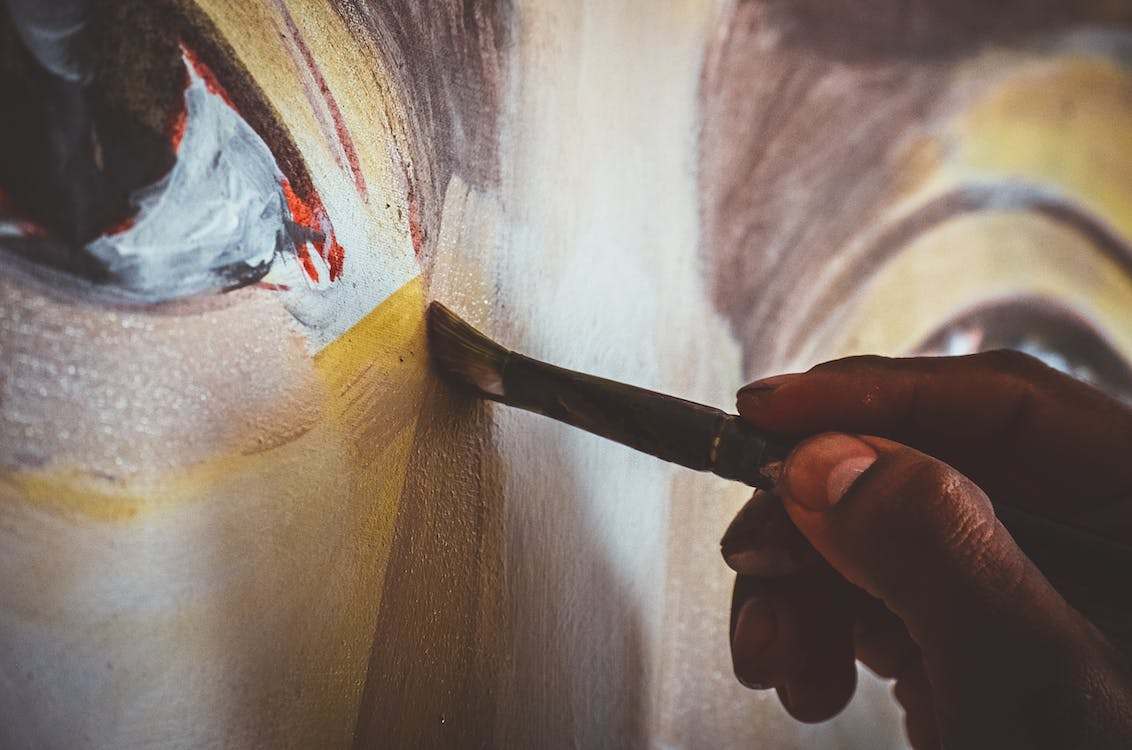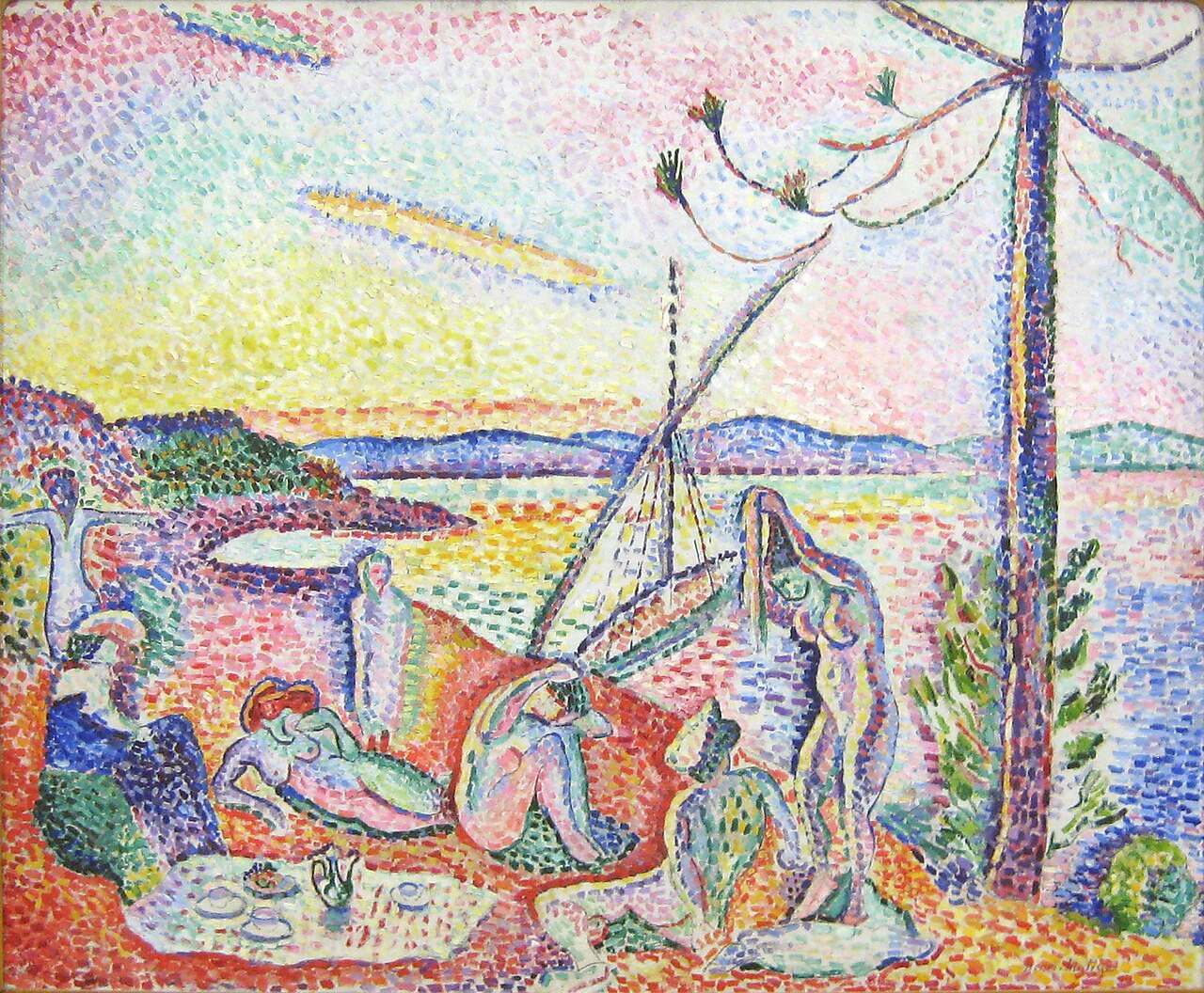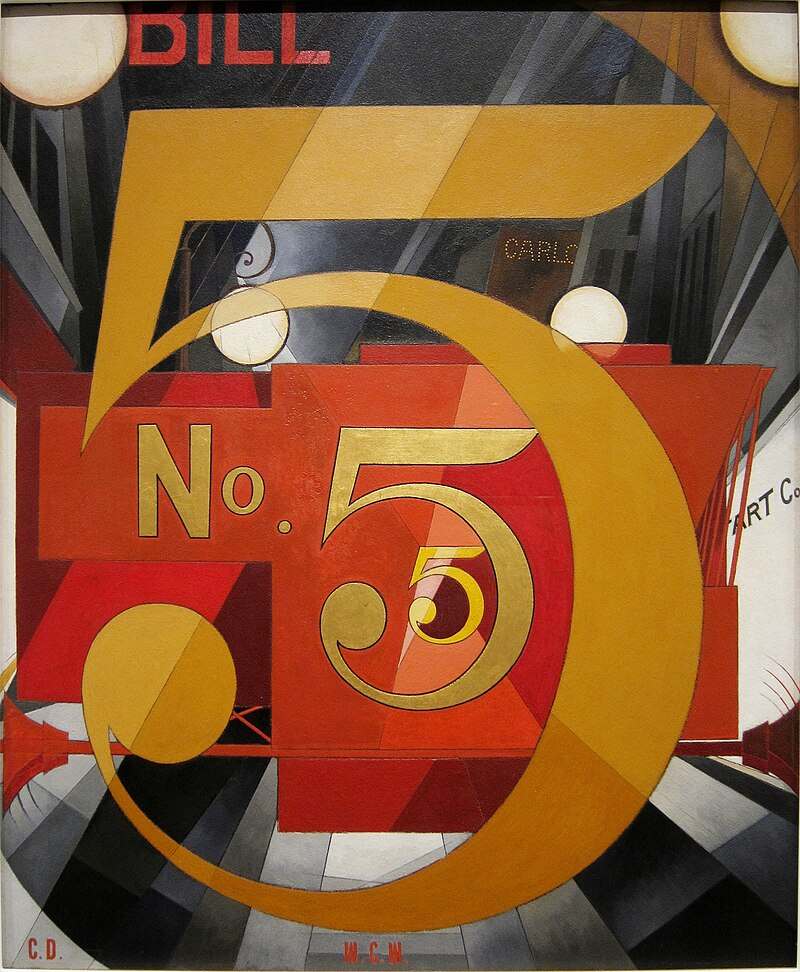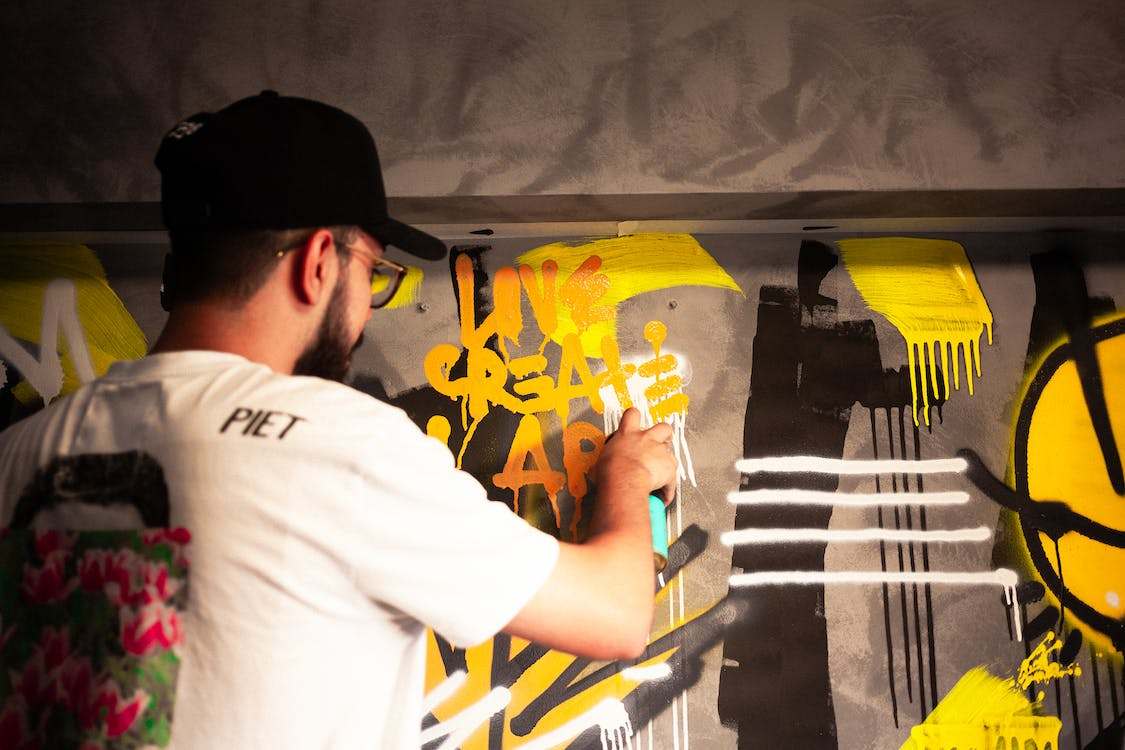Creativity is an essential and universal element that arises in every part of the world, transcending cultural boundaries and spanning the entirety of human history. It is an intrinsic force that transcends borders, binding humanity through the shared pursuit of imaginative expression. Creativity is not confined to the realm of artists; it permeates every facet of our lives, from problem-solving in the sciences to crafting compelling narratives in literature. This innate drive to create is a testament to our collective human spirit, a force that propels innovation, fosters connection, and breathes life into the myriad forms of human endeavor. As we delve into the exploration of artistic expression and its beginnings, we embark on a journey to uncover the fundamental roots of human creativity. Through an examination of the origins of artistic expression, our aim is to unravel the threads linking us to our inherent drive for creative exploration and the myriad ways it molds our perception of the world.
The Historical Roots of Artistic Expression
- Before 500 – Ancient Art: This art encompasses the rich expressions of Egypt, Greece, and Rome. Egyptian art immortalized pharaohs with symbols and strict conventions. Greek art evolved through Archaic, Classical, and Hellenistic periods, ranging from stylized to realistic depictions. Roman art, under the influence of Greece, showcased realism and monumental structures. The enduring impact of these traditions on subsequent cultures provides profound insights into the beliefs and values of ancient societies.
- 500-1550 – Medieval Art: Medieval Art weaves a tapestry across Europe marked by religious fervor and architectural innovation. During the Early Medieval phase, the process of Christianization is evident in artistic expressions such as illuminated manuscripts, exemplified by works like the Book of Kells. Romanesque architecture showcases robust stone churches adorned with frescoes, while Gothic art introduces pointed arches and stained glass in cathedrals like Chartres and Notre Dame. Serving religious functions, Medieval Art leaves an enduring mark on artistic and architectural heritage, laying the groundwork for the Renaissance.
- 1400-1600 – Renaissance Art: Emerging from the Late Middle Ages, it aimed to revive classical ideals, emphasizing humanism, perspective, and naturalism. Artists like Leonardo da Vinci pioneered techniques such as linear perspective and chiaroscuro. Mastery of oil painting by figures like Michelangelo and Raphael flourished. In terms of architecture, innovations were highlighted by grand structures such as Brunelleschi’s dome and Palladio’s villas. The Renaissance’s influence extended beyond Italy, transforming art, science, and philosophy.
- 1600-1725 – Baroque Art: Baroque art, flourishing in the 17th century, aimed for intense emotion and grandeur. Caravaggio’s chiaroscuro and Bernini’s sculptural masterpieces, such as the Ecstasy of Saint Teresa, defined the era. Influenced by the Counter-Reformation, Baroque art found expression in various forms, leaving a profound impact across Europe with artists like Rubens and Rembrandt.
- 1720-1760 – Rococo Art: Originating in France in the 18th century, it prioritized playfulness and elegance through intricate details, pastel colors, and asymmetrical ornamentation. Inspired by nature and asymmetry, it extended to interior design and decorative arts, emphasizing comfort. François Boucher and Jean-Honoré Fragonard, key Rococo painters, depicted pastoral scenes and aristocratic leisure. Reflecting the 18th century’s lighter and hedonistic aspects, Rococo paved the way for the more restrained Neoclassical movement.
- 1760-1830 – Neoclassical Art: Inspired by classical antiquity, this art aimed to revive Greek and Roman principles, emphasizing order, simplicity, and rationality. Influenced by archaeological discoveries at Pompeii and Herculaneum, it manifested in historical paintings by artists like Jacques-Louis David. From an architectural perspective, Neoclassicism embraced classical elements and adhered to strict proportions. Beyond art, it influenced literature, philosophy, and politics, aligning with Enlightenment ideals. This movement, departing from the indulgence of the Rococo, laid the groundwork for the subsequent Romantic period.
- 1800-1850 – Romanticism: Rooted in emotion, individualism, and the sublime, Romanticism explored nature, the human psyche, and existential awe. Rejecting classical constraints, artists like J.M.W. Turner depicted dramatic scenes, while writers like Wordsworth explored the sublime. This movement influenced music, with Beethoven expressing powerful emotions. The influence of Romanticism across Europe and the Americas marked a significant shift toward valuing individual experience and imagination.
- 1800s – Academic Art: Academic art dominated this era, marked by traditional techniques, classical themes, and meticulous detail. Influenced by institutions such as the École des Beaux-Arts, Academic art prioritized realism, frequently portraying subjects from history or mythology. Despite its stronghold in prestigious venues, Academic art faced challenges from Realism and Impressionism, which aimed to explore new artistic expressions beyond its strict conventions.
- 1840-1870 – Realism: Rejecting idealized depictions, Realism emphasized objective representation and detail. Gustave Courbet, a key figure, famously declared a commitment to painting what exists. Realist works often depicted scenes of rural and urban life, reflecting the impact of industrialization and social change. This movement set the stage for subsequent developments in art, influencing both subject matter and representation techniques.
- 1848-1854 – Pre-Raphaelite Art: This was a revolutionary art movement rejecting academic conventions. Founded by Dante Gabriel Rossetti, John Everett Millais, and William Holman Hunt, they aimed to revive the detailed techniques of early Italian Renaissance painters. Favoring meticulous detail, vibrant colors, and symbolism, the movement extended to literature and decorative arts. The Pre-Raphaelites infused their works with emotional intensity and reverence for nature, challenging mid-19th century art norms.
- 1870-1900 – Impressionism: It transformed traditional painting by capturing the transient effects of light and movement. Embracing visible brushstrokes and everyday subjects, Impressionism faced initial resistance but later gained recognition for its innovative techniques. Paving the way for modern art movements, it challenged rigid standards by embracing spontaneity and subjective interpretations of reality.
- 1880-1920 – Post-Impressionism: Artists like Vincent van Gogh, Paul Cézanne, and Georges Seurat sought to expand artistic expression. Unlike Impressionism’s focus on sensory experiences, Post-Impressionists delved into individual interpretations, emotional depth, and formal structure. Prominent aspects comprised Van Gogh’s vivid color palette, Cézanne’s geometric forms, and Seurat’s distinctive use of pointillism. This movement laid the groundwork for subsequent modern art movements, influencing Fauvism, Cubism, and Symbolism.
- 1880-1910 – Symbolism: Symbolism emerged as an artistic movement, rejecting realism for abstract and symbolic imagery. Led by artists like Gustave Moreau and Odilon Redon, Symbolism aimed to convey mystical and subconscious meanings, exploring themes such as spirituality and the inner self. This movement played a crucial role in connecting 19th-century Romantic ideals with the emerging modernist sensibilities of the 20th century, influencing subsequent movements like Art Nouveau and Surrealism.
- 1905-1908 – Fauvism: This was characterized by bold colors, spontaneous brushstrokes, and a departure from naturalistic representation. Fauvist works often featured intense hues and non-representational color choices, challenging conventional artistic norms. This movement, while short-lived, laid the groundwork for modern art by emphasizing emotional expression and the autonomy of color.
- 1905-1925 – Expressionism: Expressionism prioritized emotions and vivid colors in art. Led by figures like Edvard Munch and Wassily Kandinsky, the movement profoundly influenced modern art, emphasizing subjective experiences. With distorted forms and intense colors, Expressionism left an indelible mark on early 20th-century artistic expression and cultural landscapes.
- 1908-1920 – Cubism: A groundbreaking art movement from 1908 to 1920, transformed the visual language. Led by Pablo Picasso and Georges Braque, Cubist artists dismantled and reconstructed subjects into geometric forms, challenging conventional representation. Analytical Cubism, marked by fragmented shapes, evolved into Synthetic Cubism, introducing collages and simplified shapes.
- 1909-1918 – Futurism: This emerged in Italy with a focus on capturing the energy and speed of the modern world. Founded by Filippo Tommaso Marinetti, Futurist artists celebrated technology, urban life, and motion. Characterized by dynamic compositions, fractured forms, and an embrace of the machine age, this avant-garde movement reflected a fervent desire for progress and change. Futurism had a lasting impact on modern art, influencing various disciplines, including painting, sculpture, literature, and performance art.
- From 1910 – Abstract art: From 1910 onward, Abstract Art emerged as a revolutionary movement, challenging representational norms. Artists like Wassily Kandinsky and Kazimir Malevich pioneered this approach, abandoning recognizable forms in favor of non-representational compositions. Abstract art aimed to convey emotions and ideas through color, shape, and line, opening new possibilities for artistic expression and leaving an enduring impact on the trajectory of modern art.
- 1916-1923 – Dada art: Dada art, thriving from 1916 to 1923, was a radical and anti-establishment movement that emerged in response to the chaos of World War I. Artists of the Dada movement, among them Marcel Duchamp and Tristan Tzara, skipped conventional artistic norms, crafting works that welcomed absurdity, chance, and the deconstruction of traditional artistic forms. Characterized by a spirit of rebellion and irreverence, Dada had a profound impact on the evolution of modern art, influencing Surrealism and other avant-garde movements.
- 1915-1945 – Precisionism: This was a distinctive American art movement that emerged in response to industrialization and urbanization. Influenced by Cubism, artists like Charles Demuth and Charles Sheeler created precise, sharply defined depictions of urban and industrial landscapes. Combining geometric abstraction with realistic detail, Precisionism captured the streamlined aesthetic of modern technology, reflecting the intersection of industry and art during the early to mid-20th century.
- From 1920s – Surrealism: Surrealism was a groundbreaking art movement led by André Breton. Surrealist artists, such as Salvador Dalí and René Magritte, sought to unlock the subconscious mind, creating dreamlike and fantastical imagery. Blending reality with the irrational, Surrealism exerted a profound influence on painting, sculpture, literature, and film, emerging as a major force in 20th-century avant-garde art.
- 1920-1935 – Art Deco: Characterized by geometric shapes, bold colors, and a blend of modern and traditional elements, Art Deco reflected the optimism of the post-World War I era. Seen in iconic structures like the Chrysler Building and in decorative arts, Art Deco encapsulated the sophistication and glamour of the Roaring Twenties and the interwar period.
- 1956-1960s – Pop Art: A vibrant and influential art movement that celebrated popular culture and consumerism. Artists such as Andy Warhol and Roy Lichtenstein led the Pop Art movement, integrating imagery from mass media, advertising, and everyday life into their works. Rejecting traditional artistic boundaries, Pop Art played a pivotal role in challenging perceptions of high and low culture, leaving an enduring impact on contemporary art.
- Photorealism: Photorealism, emerging in the late 1960s and continuing into the 1970s, is an art movement characterized by the meticulous replication of photographs in paintings. Artists like Chuck Close and Audrey Flack utilized precise techniques to create hyper-realistic images, challenging traditional notions of artistic representation. Photorealism delves into the intersection of technology, photography, and traditional artistic skill, encouraging viewers to reconsider the boundaries between reality and artistic interpretation.
- Conceptual Art: Conceptual Art, originating in the 1960s, prioritizes ideas over traditional aesthetics, challenging conventional art forms. Artists like Sol LeWitt and Yoko Ono focus on conceptual elements rather than visual representation. Installation Art, a connected movement, constructs immersive environments within specific spaces, fostering audience interaction; both movements redefine artistic boundaries and how viewers engage with the art.
Throughout the course of history, diverse forms of expression have served as vehicles for communicating emotions, with art emerging as a pivotal mode of conveying sentiments. (1) The allure of art lies in its capacity to articulate one thing while implying another, fostering subjective interpretation. In instances where direct expression may be constrained, such as in communist regimes or environments with limited freedom of speech, art becomes a crucial avenue for communication. Spanning a spectrum of forms, from sculpture and song to visual arts, writing, and dance, art not only serves as an outlet for repressed feelings but also refines the articulation of emotions. It is noteworthy that the ability for artistic expression is a distinctive trait that sets humans apart from other animals, as no other species engages in such creative endeavors.
Importance of Artistic Expression
The importance of the roots of artistic expression lies in the profound fusion of human creativity, emotion, and intellect. Artists harness their creative energy to produce works encapsulating their most intimate experiences, thoughts, and sentiments. Through their creations, artists extend an invitation to viewers, urging them to immerse themselves in a distinctive worldview. In this context, art becomes a potent tool for cultivating diverse perspectives, broadening horizons, and nurturing empathy. Its effectiveness lies in its capacity to evoke a spectrum of emotions, ranging from joy and awe to melancholy and introspection. (2) Serving as a catalyst for personal growth and self-reflection, the foundations of artistic expression wield transformative power, resonating profoundly within us and enriching our comprehension of the human experience.
What Does Cross-Cultural Pollination and Innovation in Art Entail?
Cross-cultural pollination in art refers to the dynamic exchange and blending of artistic elements, styles, and ideas across different cultures, creating innovative and hybrid forms of creative expression. (3) This process is a reflection of cultural interactions, migrations, trade, and global connectivity, allowing artists to draw inspiration from diverse sources and infuse their work with a rich tapestry of influences. In the realm of art, cross-cultural pollination fosters creativity, pushing boundaries, and transcending traditional artistic norms. Artists engage in a dialogue with diverse cultural contexts, incorporating elements from various traditions, aesthetics, and narratives. This interaction often results in the emergence of novel and unique forms of artistic expression that reflect a synthesis of different cultural influences.
Innovation in art is intrinsically tied to cross-cultural pollination. When artists encounter and engage with different cultural perspectives, they are prompted to rethink traditional approaches and experiment with new techniques, materials, and themes. This cross-pollination can lead to groundbreaking artistic movements, challenging established norms and contributing to the evolution of global art. The fusion of cultural elements in art not only creates visually captivating pieces but also serves as a catalyst for broader conversations about identity, diversity, and interconnectedness. It allows for a deeper understanding and appreciation of the shared human experience, transcending cultural boundaries and fostering a sense of unity in diversity. (3) Ultimately, cross-cultural pollination and innovation in art embody the ever-evolving nature of artistic expression and its capacity to reflect the interconnected world in which we live.
Cultural Diversity in Art
Exploring cultural diversity in art involves immersing ourselves in the diverse and vibrant realm of artistic expression found worldwide. The art world serves as a mosaic, bringing together a myriad of cultures, each contributing its distinct traditions, techniques, and narratives to this creative tapestry. (4) Embracing the journey of cultural diversity in art involves not only appreciating the visual and conceptual nuances of various artistic traditions but also expanding our perspectives. It becomes a gateway to a deeper understanding of the world and the myriad ways in which different cultures shape and contribute to the global artistic conversation, fostering a rich exchange of ideas and insights.
How to Identify Cultural Diversity in Art?
Recognizing cultural diversity in art can provide a enriching experience, requiring an understanding of the cultural influences shaping a piece of art. Here are several indicators to consider:
- Symbolism: Art is a language often steeped in symbolism, with symbols and motifs carrying profound cultural meanings. Delving into the symbolic realm of art unveils layers of cultural narratives, traditions, and beliefs. Each symbol acts as a visual metaphor, offering viewers insights into the cultural context that shapes the artwork. This exploration allows for a deeper appreciation of the nuanced messages artists convey, transcending the visual to reveal the cultural depth beneath.
- Materials: The choice of materials in art becomes a crucial indicator of cultural influences, providing tangible links to the traditions and resources of a particular society. Examining the materials used, such as the utilization of jade in Chinese art or terracotta in ancient Greek art, unveils distinct cultural clues. The selection of materials not only reflects the artistic preferences of a culture but also offers a glimpse into the historical, geographical, and societal contexts that have shaped artistic practices. In essence, the materials become storytellers, narrating the cultural journey encapsulated within each piece of art.
- Color and Pattern: Diverse cultures manifest specific associations with colors and patterns in their art, presenting visual markers that signify their unique cultural identity. By scrutinizing the color palette and recurring patterns, observers can uncover clues that illuminate the cultural nuances embedded within the artwork. These visual elements become essential threads in the rich tapestry of cultural expression, providing a gateway to understanding the diverse aesthetic languages employed by different societies.
Exploring cultural diversity in the arts has not only broadened artistic horizons but has also laid the foundation for inclusivity in the art world as we know it today. The journey toward accepting and integrating various cultural influences has profoundly shaped the evolution of artistic styles over time. Embracing diverse artistic expressions has emerged as a driving force behind the rich tapestry of contemporary art, fostering an environment where artists draw inspiration from a multitude of cultural sources. This inclusive approach not only celebrates the uniqueness of individual cultural narratives but also contributes to the continuous transformation and dynamic synthesis of artistic styles, reflecting the ever-evolving nature of the global artistic landscape.
Conclusion
The evolution of art from Ancient times through the Renaissance, and beyond, reflects a dynamic journey of innovation, rebellion, and diverse expressions. Each period encapsulates the spirit and values of its time, contributing to the rich tapestry of human creativity. From the meticulous details of Academic Art to the emotive landscapes of Romanticism and the revolutionary techniques of Post-Impressionism, these movements have not only shaped the course of art history but have also influenced broader cultural, social, and intellectual currents. The ever-changing landscape of art continues to inspire, challenge, and captivate audiences, showcasing the limitless possibilities of human imagination and expression.




